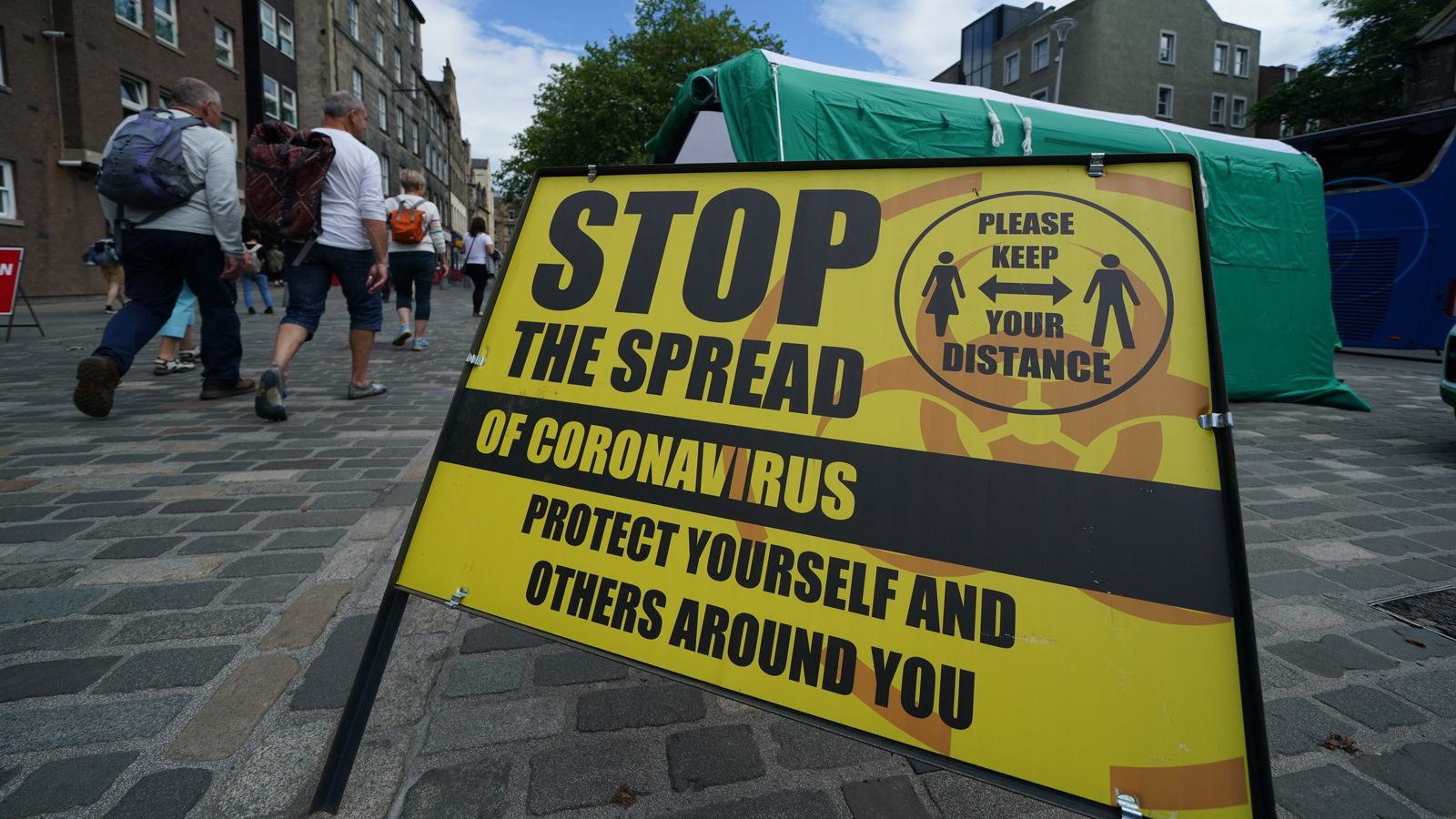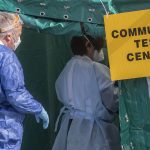The Omicron variant could cause between 25,000 to 75,000 deaths in England over the next five months if no additional measures are taken beyond Plan B, according to experts.
New modelling from the London School of Hygiene & Tropical Medicine (LSHTM) used experimental data to look at how Omicron may transmit as the country heads into 2022.
It suggests that Omicron could potentially cause more cases and hospitalisations in England than during the wave in January 2021, if additional control measures are not taken.
Under the best-case scenario, the variant could lead to a peak of more than 2,000 daily hospital admissions, with 175,000 hospitalisations and 24,700 deaths between 1 December 2021 and 30 April 2022, the projection suggests.
The optimistic scenario is one where Omicron’s immunity escape is low and boosters prove highly effective.
Please use Chrome browser for a more accessible video player
Measures such as restrictions on indoor hospitality, closure of some entertainment venues, and limits on gathering sizes from early next year would be sufficient to substantially control this wave, reducing hospitalisations by 53,000 and deaths by 7,600, the experts say.
Under the worst-case scenario (high immune escape and lower effectiveness of boosters), if no additional control measures are taken, there could be 492,000 hospitalisations and 74,800 deaths.
COVID-19: Treasury admits staff had drinks during lockdown last year amid row over Downing Street parties
COVID-19: Omicron is by far the most worrying form of coronavirus we’ve seen – but we shouldn’t be too afraid
Care home residents only allowed three named visitors as Omicron cases rise
What ‘Plan C’ restrictions could we see if Plan B fails to curb the spread of Omicron?
In this scenario, the experts estimate that stronger measures may be required to keep the number of hospital admissions below the January 2021 peak.
Dr Rosanna Barnard, who co-led the research, said that while there is still a lot of uncertainty over Omicron, “these early projections help guide our understanding about potential futures in a rapidly evolving situation”.
“In our most optimistic scenario, the impact of Omicron in the early part of 2022 would be reduced with mild control measures such as working from home,” she said.
“However, our most pessimistic scenario suggests that we may have to endure more stringent restrictions to ensure the NHS is not overwhelmed.
Please use Chrome browser for a more accessible video player
“Mask-wearing, social distancing and booster jabs are vital, but may not be enough.
“Nobody wants to endure another lockdown, but last-resort measures may be required to protect health services if Omicron has a significant level of immune escape or otherwise increased transmissibility compared to Delta.
“It is crucial for decision-makers to consider the wider societal impact of these measures, not just the epidemiology.”
Her co-author of the study, Dr Nicholas Davies, told a briefing of science journalists that a strategy of mass lateral flow testing in workplaces could be effective in controlling the epidemic and avoiding some additional control measures.






















